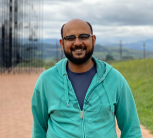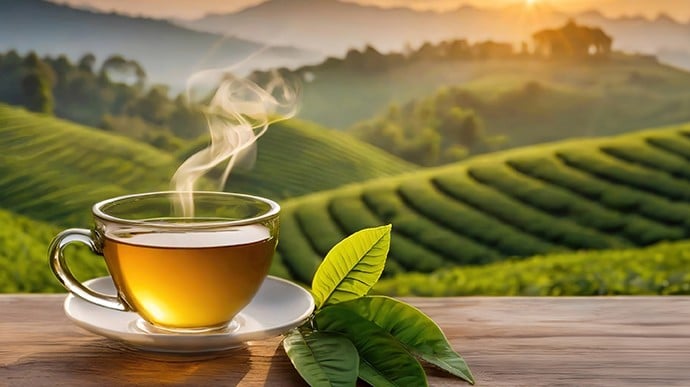The Albertina Sisulu orchid was described as a new species in 1955, the same year the struggle stalwart launched the Freedom Charter with her compatriots in the ANC Women’s League. Researchers at the University of Pretoria want to help save this endangered plant by understanding the unique fungi it depends on for survival.
Dr Tanay Bose, a postdoctoral fellow UP’s Forestry and Agricultural Biotechnology Institute (FABI), co-supervised Modjadji Makwela’s research on the orchid’s fungi, which was published in the South African Journal of Botany.
They studied the plant’s mycorrhizosphere, which refers to the soil in which the orchid’s roots and fungi (known as mycorrhizae) share nutrients to support each other.
“If this population is lost, the orchid species will be lost forever— extinct,” says Bose of the only 68 plants known to exist. The critically endangered plant appears on the South African National Biodiversity Institute’s (SANBI) redlist, with just over 60 plants found at the Walter Sisulu Botanical Gardens, the last place it can be found anywhere in the world.
As these plants are so rare, researchers had to carefully collect the soil around the plants so as not to disrupt them or destroy them in any way.
“With the help of the Wild Orchid Society of Southern Africa (WOSA) Andrew Hankey from the Walter Sisulu Botanical Garden, we collected soil samples near the plants where the orchid is not known to grow, and some soil samples close to the plants”, says Bose.
After extracting DNA from the soil samples, the researchers identified the populations of fungi types unique to the mycorrhizosphere surrounding the Albertina Sisulu orchid.
“We’ve now got a rough idea of the mycorrhiza, or fungi, but we could not identify them at the species level,” says Bose. This map of fungi surrounding the orchid can tell the researchers the exact concoction needed to help the orchid develop when it is planted in other areas to conserve it.

The orchid relies on the symbiotic relationship it has with its unique ecosystem of fungi, since its seeds lack an endosperm, the flashy encasing that gives other plant seeds the nutrients it needs to germinate.
“The billions of seeds each plant produces need to be infected by a specific kind of mycorrhizae to germinate and keep growing throughout its life,” says Bose. And, in turn, the orchid completes the symbiotic relationship by giving the fungi the carbon it needs to survive.
The Albertina Sisulu orchid is unique in that it has this particular set of conditions currently only found in this small area in Gauteng, but the secret to saving it from extinction might lie in this soup of fungi researchers are slowly learning more about.
Moving forward, Bose says researchers must now investigate the roles different fungi play in the orchid’s mycorrhizosphere. They need to find out which ones are beneficial to the plant, which ones are beneficial to each other, and what balance is best for this unique ecosystem.
Dr Tanay Bose ScienceLink Photocredits: Andrew Hankey and Karsten Wodrich
July 12, 2022

Dr Tanay Bose has been doing research at the University of Pretoria (UP) for the past 10 years. He obtained a BSc (Hons) in Botany from the University of Calcutta in India and an MSc in Botany with specialisations in mycology and plant pathology from Presidency College at the University of Calcutta. Dr Bose also holds an MSc in Botany obtained at the University of British Columbia in Canada, where he specialised in fungal systematics and evolution.
He obtained a PhD in Microbiology from UP in 2018, and began his research at the University as a PhD student, between November 2013 and January 2018. Since 2018, Dr Bose has been doing research as a postdoctoral fellow at the Forestry and Agricultural Biotechnology Institute (FABI).
“FABI is one of the leading research centres in the world for studying microbes,” says Dr Bose says. “In addition, UP is one of the top research universities in Africa; this inspired me to conduct my research here.”
Dr Bose’s research contributes to the betterment of the world because he has a broad research focus that aims to answer various practical questions. Within his academic discipline, he co-leads and conducts disease screening trials for South African forestry enterprises to assist them in selecting disease-resistant trees. He also co-leads a project that involves assisting forestry companies to select appropriate soil remediation measures to improve commercial forest sustainability by using next-generation sequencing.
“I am also researching orchid mycorrhizal fungi to preserve South Africa’s wild orchid diversity, which is currently vulnerable due to anthropogenic disturbances, habitat loss and climate change,” Dr Bose explains.
His research matters, he says, because it is meant to protect South Africa’s plant biodiversity, improve its economy by augmenting the sustainability of the commercial forestry sector, and build and improve the intellectual capacity of South Africa.
In cooperative cross-faculty research, Dr Bose is co-supervising a student project in collaboration with the Department of Computer Science. “For this study, we are using artificial intelligence and machine learning as tools for the early detection of plant diseases caused by the soil-borne pathogen Phytophthora.”
Over the past 18 months, Dr Bose has had several research highlights. He has written or co-written more than 10 scientific manuscripts, seven of which have been published in high-impact, ISI-rated journals. At least four are undergoing the peer-review process. His scientific contribution to the field of Phytophthora research in South Africa was recently featured in a book titled History of Plant Pathology in South Africa, written by Professors Mike Wingfield and Teresa Coutinho.
“I’ve started a lot of new research over the past 18 months, such as using artificial intelligence to detect plant diseases; taxonomic studies of Rhizoctonia, a group of fungi that includes important pathogens that affect plants in South Africa and globally; and microbial diversity studies from the commercial forest environment,” he says.
Dr Bose adds that numerous people have inspired his research work, including his parents, peers and students. “Their influence has made me a better researcher over time. I gain inspiration from the lives that pass by me; I believe there is always something to learn from everyone.”
He hopes to be a better advisor to his students and to conduct more impactful research that can improve human life. “Most importantly, I constantly strive to improve myself to be a better human being.”
To learners who are interested in his field, he says: “The most important thing for a teenager is to focus, figure out what you want to be (this is always a big challenge), then chase that dream. There will be challenges, but with the right attitude and hard work, you will succeed.”
During his time off, Dr Bose enjoys cooking to unwind. He says he used to enjoy reading classic mysteries such as Sherlock Holmes, Hercules Poirot and many others, but that these days, he doesn’t always get time to read, so he listens to audiobooks. “Classical music is also something I enjoy; I listen to Mozart, Beethoven, Bach and Tchaikovsky.”
 Story
Story
University of Pretoria (UP) researchers have found that the antioxidant content of certain types of tea can be likened to that found in recommended portions of fruit and vegetables.
 Infographic
Infographic
Half a cup of black tea, oolong tea or green tea contained the same amount of antioxidants with radical scavenging capabilities (RSC) as that of a 200mg vitamin C tablet.
 Story
Story
Researchers at the University of Pretoria (UP) may have identified the gene that is responsible for diet-related obesity. By exploring the role of the novel gene Slc7a8, they have made a potential breakthrough in current knowledge about the cellular mechanisms that drive fat accumulation. This understanding is crucial in developing effective treatments.
Copyright © University of Pretoria 2025. All rights reserved.
Get Social With Us
Download the UP Mobile App